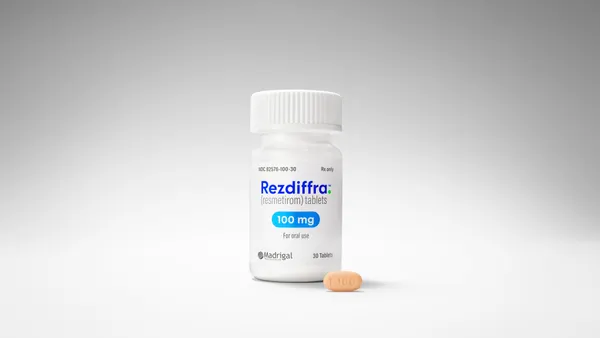30 September 2008 VIEW on Marketing MESSAGE DEVELOPMENT The messages conveyed in promotional materials are often how physicians, consumers and payers first experience a brand — and they remain a powerful force in shaping how stakeholders view a product throughout its life. The words chosen to express a brand to the market can have a tremendous impact on performance. Even subtle changes in language can translate into dramatic differences in how effectively a message motivates its audience and delivers results. To understand the power words have over stakeholder behaviors and brand performance, TNS Healthcare tested 77 DTC messages in the oral contraceptives category among 533 women between 18 and 45. Findings reveal key lessons for marketers to remember when wording their claims. Lesson No. 1. Focus on the Positive When testing phrases used in YAZ advertising to communicate that the product reduces acne, the claim that YAZ “can help keep your skin clear” is more motivating than any of the statements directly mentioning acne: . In recent studies, 9 out of 10 women saw improvement in their moderate acne. . Proven to treat moderate acne . Erase acne Clearly, the word acne is a demotivator. Researchers hypothesize that women don’t want to think about having acne. Everyone, however, wants clear skin. Focusing on the positive outcome rather than the negative condition significantly improves message effectiveness. Lesson No. 2. Be Specific Looking at several Seasonique messages around reducing the number of periods women have, research shows that the most specific statement is also the most effective. “You should experience 4 scheduled periods a year instead of the usual 13” is significantly more motivating than vaguer claims, such as “more time between periods.” Lesson No. 3. Consider the Connotations Even messages with the same themes can have very different levels of effectiveness. Like Seasonique, Lybrel also seeks to convey that its product results in fewer periods. However, the message featured in its launch press release — “Lybrel is intended for women who want to put their period on hold” — is far less motivating than the Seasonique claim of 4 periods a year. Researchers believe that “on hold” has negative connotations, such as being put “on hold” during a call. Things on hold don’t disappear. They lie in wait. Saying women will have fewer periods is a much more appealing concept then saying their periods will be “on hold.” Lesson No. 4. Be Clear on the Objective and Audience Different messages drive different actions — and appeal to different demographic segments. Successful marketers must understand their target audience and define exactly what they want that audience to do. For example, Seasonique’s message about 4 periods works best to motivate women between 36 and 45 to visit a Web site. YAZ’s clear skin message is most effective in convincing women not currently taking an oral contraceptive to call an 800 number. For women in their postchildbearing years, the most motivational message, from Lybrel, revolves around reducing cancer risks. Lesson No. 5. Know What’s Important When women choose an oral contraceptive, effectiveness is a primary concern. Therefore, however effectiveness is communicated, it is equally motivating: . Cerazette provides high contraceptive efficacy. . …Seasonique is more than 99% effective at preventing pregnancy. . YAZ is 99% effective… Motivational messaging depends on knowing what’s important to the audience. The core message must address the audience’s greatest concern. Conclusion Effective messages resonate with the target audience — and motivate the actions to drive brand performance. Research is key to identifying the most powerful messages and the right words to express them. To ensure the best solution, it is critical to test large numbers of approaches — along with graphics — so good ideas don’t get cut before being assessed. An optimal research methodology provides room for a wide range of possibilities and tests them in combination, as stakeholders experience them in the real world. Through testing, marketers can ensure their messages achieve the results they want at every lifecycle phase. TNS Healthcare TNS HEALTHCARE, with operating units in 70 countries, offers globally consistent solutions for optimizing sales and product performance, assessing promotional effectiveness, tracking brands and supporting strategic decisions around the world. Clients can measure, manage, and monitor their businesses across products, categories, countries and time periods. For more information, visit tnsglobal.com/healthcare. Creating Power Messages Finding the Right Words to Drive Brand Performance Effective messages resonate with the target audience — and motivate the actions to drive brand performance. Wes Michael, Executive Vice President Have You Outgrown Message Testing Service? Are some of your best ideas squeezed out of your message research, because there’s just no room? TNSHealthcare understands you need a message testing service that grows to fit your needs. So you never lose that “big idea” because of limited size. That’s why TNSHealthcare’s MessageEval ranks and sorts up to 200 message elements. And we test them in groups, as full concepts—just as customers experience them in the real world. So you identify exactly the right combinations to optimize results—in every target audience and every target geography around the globe. You even have space to test competitive messages along with your own. Plus, MessageEval works with small samples, for maximum speed and cost effectiveness. Provides multimedia capabilities that measure text, graphics and sound. And lets every respondent assess every message. So you never guess what someone thinks about your story. You know for sure. When it comes to message testing, it’s important to think big! MessageEval^TM Tests up to 200 Messages. So It’s a Perfect Fit for All Your Campaigns—No Matter How Big Your Ideas Are! Find out how MessageEval can give every idea the chance to grow to its full potential. To learn more, contact Wes Michael at 4105590291 or [email protected].
An article from


Creating Power Messages Finding the Right Words to Drive Brand Performance
Filed Under:
Commercialization








